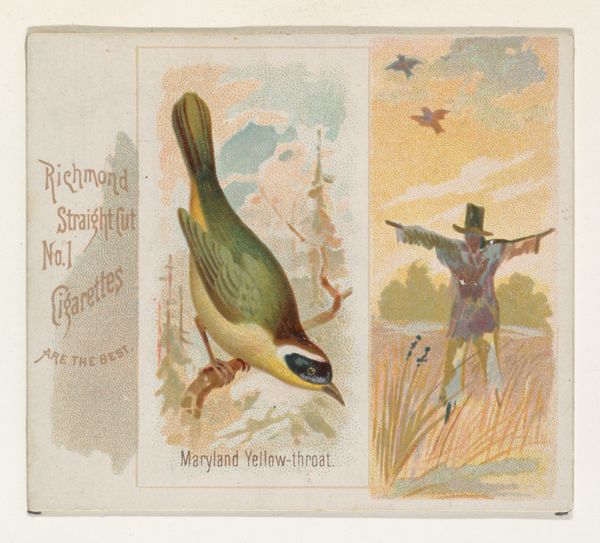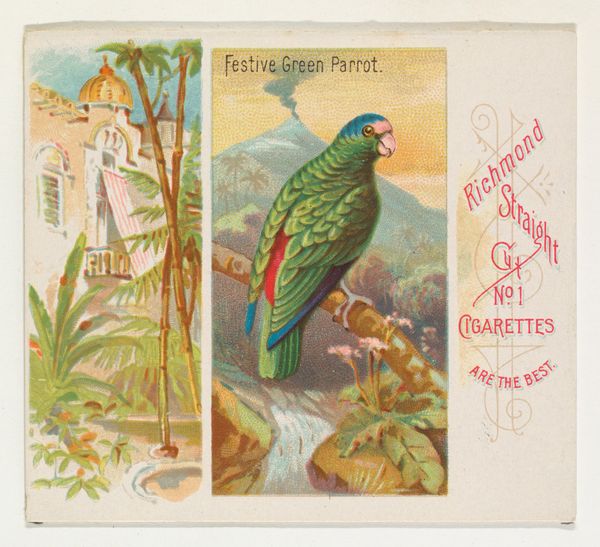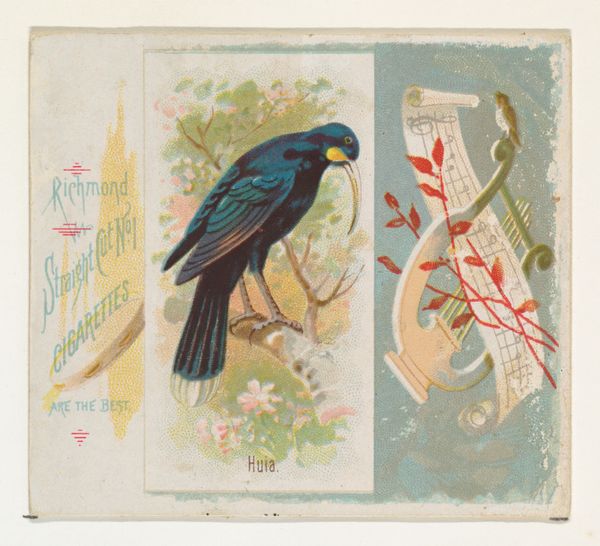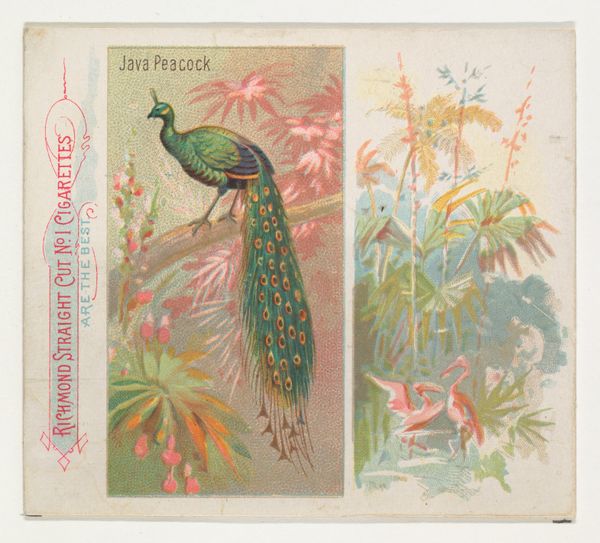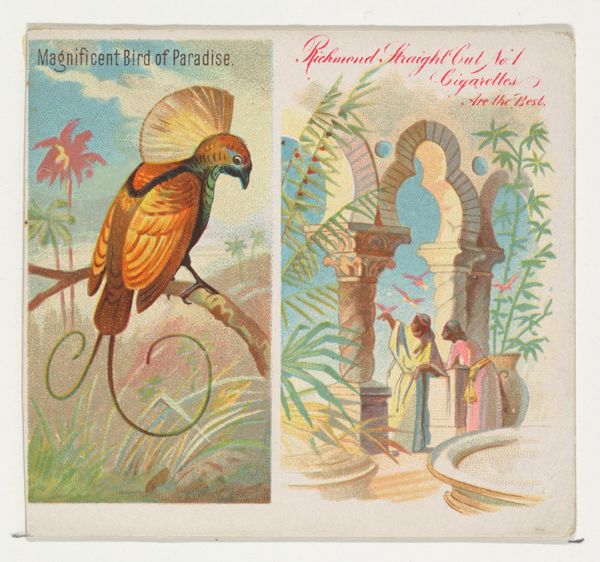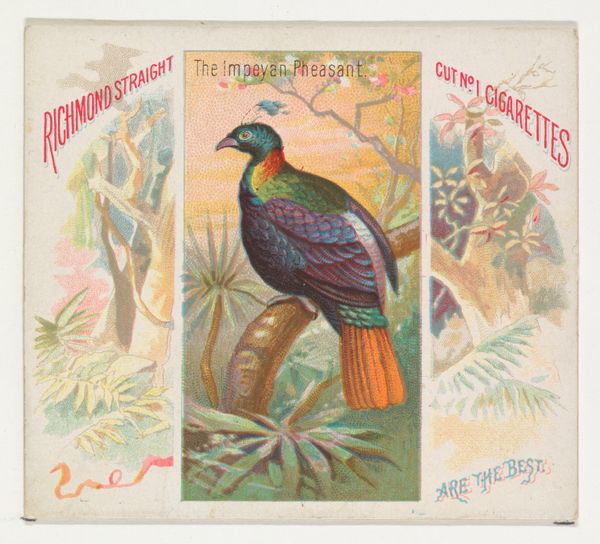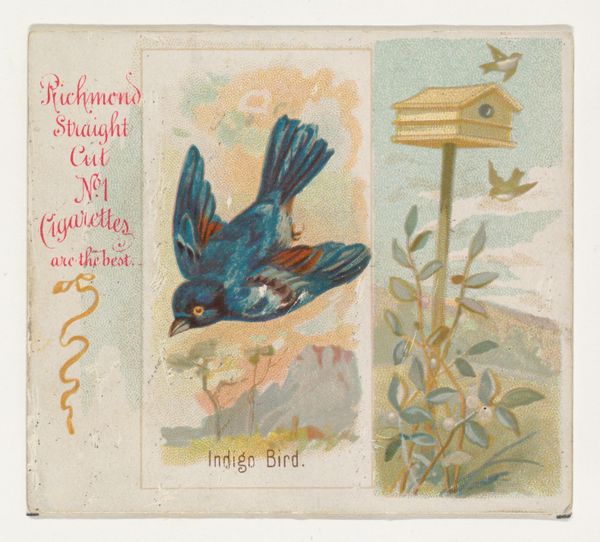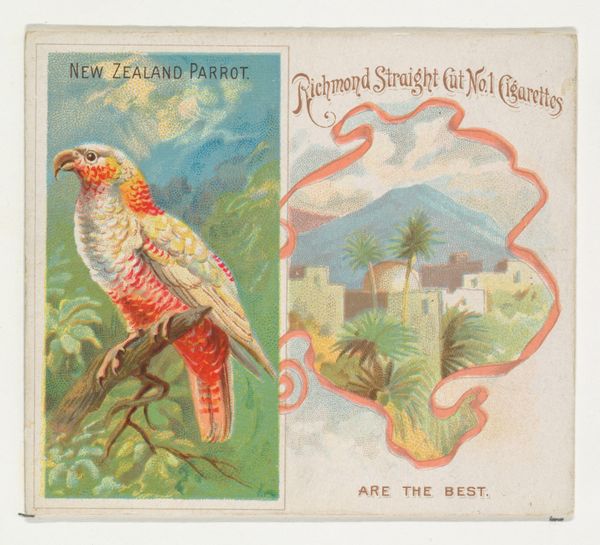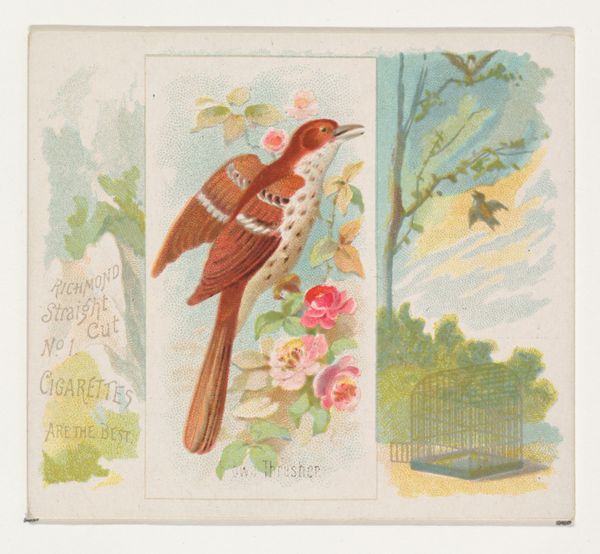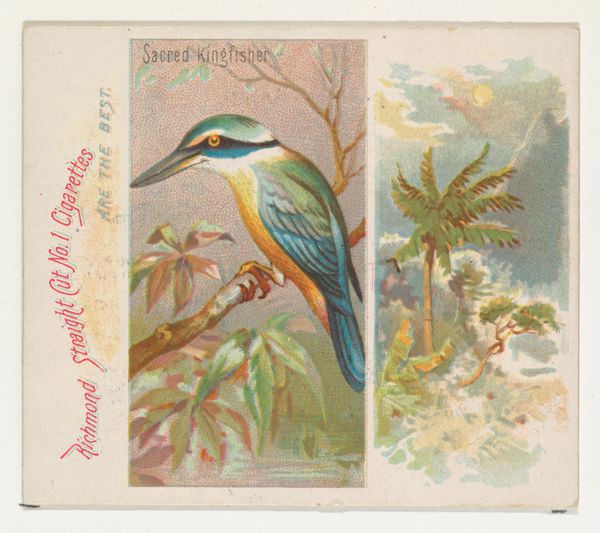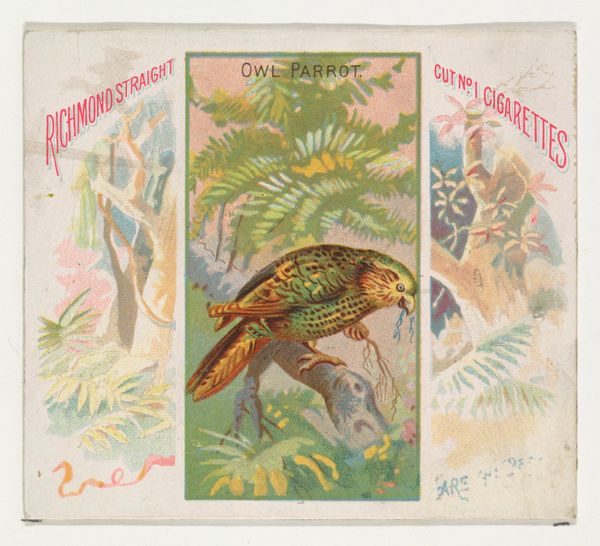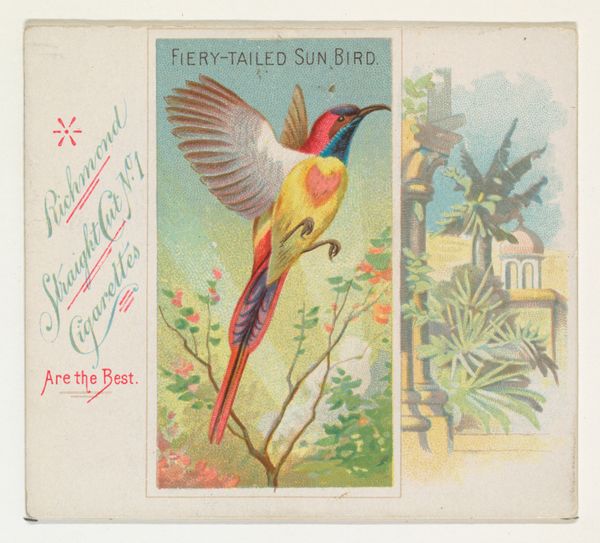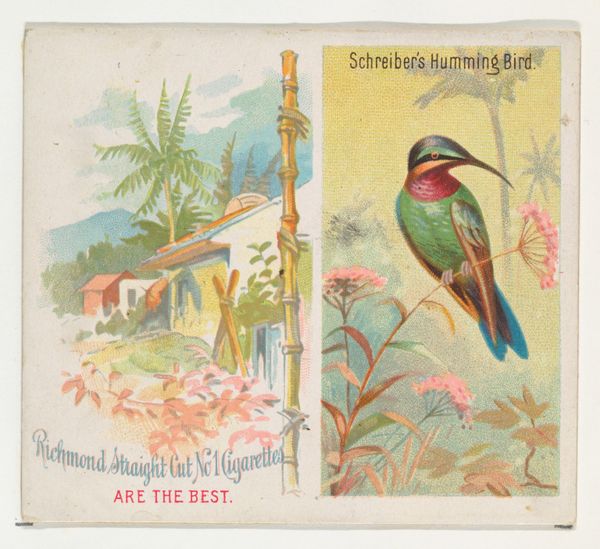
The Notornis, from Birds of the Tropics series (N38) for Allen & Ginter Cigarettes 1889
0:00
0:00
lithograph, print
#
water colours
#
lithograph
# print
#
bird
#
coloured pencil
#
art nouveau
Dimensions: Sheet: 2 7/8 x 3 1/4 in. (7.3 x 8.3 cm)
Copyright: Public Domain
Editor: This lithograph from 1889, titled "The Notornis," was created by Allen & Ginter as part of their "Birds of the Tropics" series for cigarette cards. It has two distinct sections: one portraying a vibrantly colored bird, the Notornis, and another showing people in what seems like an imagined Middle Eastern scene. It’s a bit odd to see these two images combined; what do you see in this piece? Curator: It is odd, isn’t it? But also revealing. These cards weren't simply about showcasing nature; they participated in broader cultural projects. Notice the composition – a so-called 'exotic' bird placed alongside an orientalist fantasy. Allen & Ginter were selling cigarettes, and they were also selling a worldview. Editor: A worldview? How so? Curator: Think about what the pairing suggests. The Notornis, a flightless bird, native to New Zealand, and this imagined scene in the Middle East are both presented as 'exotic' Others to be consumed by the Western gaze. The "Birds of the Tropics" become like commodities, paralleling the cigarettes themselves. How does that sit with you? Editor: I see your point. It’s not just about the bird or the scene individually but the act of collecting and framing these images as representative of a broader, somewhat fabricated exoticism. So, this seemingly innocent card is actually reinforcing a colonial way of seeing the world? Curator: Exactly! The card performs a double maneuver of naturalizing colonial power structures and obscuring histories of exploitation. We can consider the ways consumer culture becomes implicated in reinforcing systems of oppression. It pushes us to be aware of the insidious ways power operates within visual culture. Editor: Wow, I’ll never look at these old cards the same way. I came in thinking this was just a pretty bird drawing, but it's clearly so much more than that. Curator: Indeed. The most innocuous image can carry a heavy burden of history. Hopefully it inspires us to engage more critically with the world around us.
Comments
No comments
Be the first to comment and join the conversation on the ultimate creative platform.
